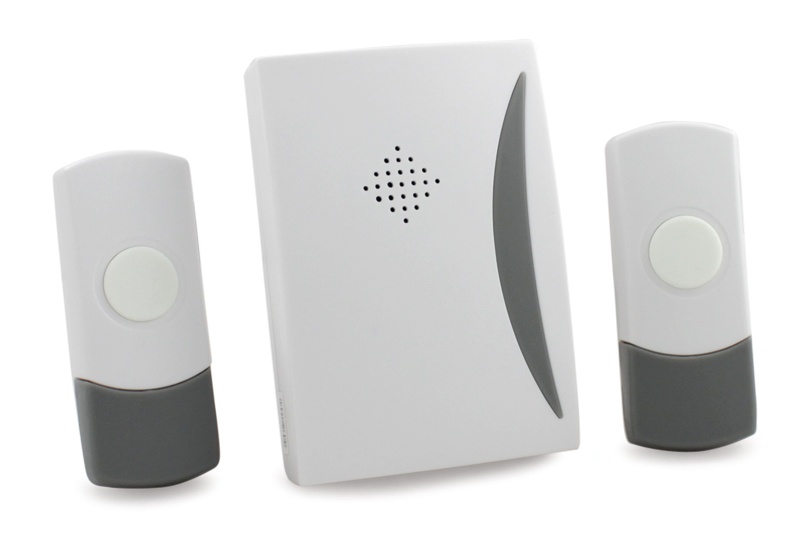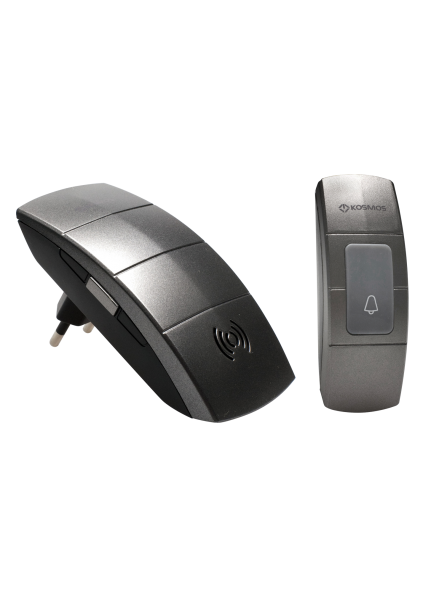From internal pipelines, drains are transported by external ...


The doorbell is a familiar device for everyone that we use every day without even noticing it. But this is until you need to install a new one or replace the old one. This is where the difficulties begin: how to connect the call, which wires to use, where to get power from and where to supply it ... There is nothing complicated in the connection, but you need to know the circuit.
Before you connect a call, you need to deal with its device. The volume of work depends on this, and their type of work can also be different. At the installation site, electric calls are apartment and street. The difference is that the button in the second version has a sealed enclosure, with a high level of protection against dust and moisture. It is these models that are needed when installing on the street.
Not every doorbell is a simple device.
Any doorbell consists of two parts: a button and an indoor unit in which an electro-mechanical doorbell or board and speaker are located. According to the method of execution there are wire and wireless electric bells. In wired blocks are interconnected by wires (hence the name). When you press the ringer key, power is supplied to the indoor unit, which issues a sound signal.
Wireless operation is based on the transmission of radio signals. The receiver is in the indoor unit, the transmitter is in the button. Signals can be of two types: analog and digital. Analogue wireless calls are cheap, but not very reliable: the signal is subject to distortion, which is why there are often false positives. There are also reverse situations - there are no sounds, because the signal is “lost” or has become too weak. Another nuisance with wireless analog calls is overlapping range with neighbors. Then it turns out that the buttons of nearby calls cause a signal on all receivers. They called the neighbors - you got a signal. And vice versa. How to fix? Change the frequency of the signals. Do this by soldering the jumpers on both blocks.

Wireless calls are easy to install, but there may be problems with operation
Digital wireless calls are more reliable, but also more expensive. A digital signal is less susceptible to interference. Most firms develop their own waveform, so that overlapping the radius does not cause problems. In addition, some models have the ability to regularly change the frequency.
Plus wireless - in ease of installation. No wires and problems associated with their installation. The downside is that cheap models work unstably (especially in winter when batteries freeze), while reliable ones are expensive.
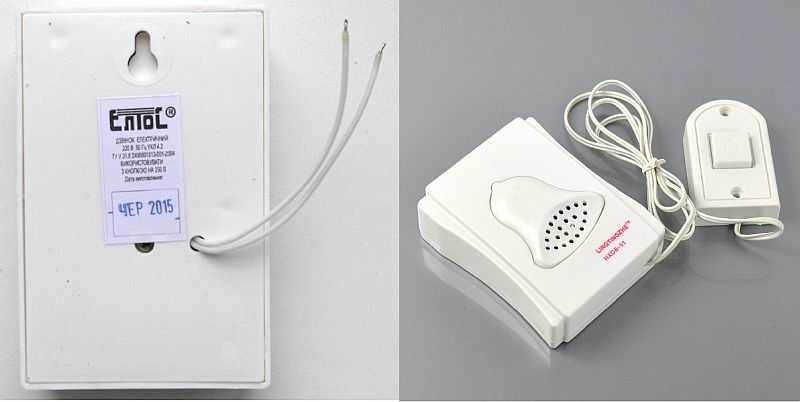
With wired fuss during installation a lot more. But this is an option - "made and forgot." Problems can only occur if the wiring is damaged.
It seems that it’s so difficult to choose a place to set a call. This is only at first glance. There are many nuances, the knowledge of which will make the call setup process much easier.
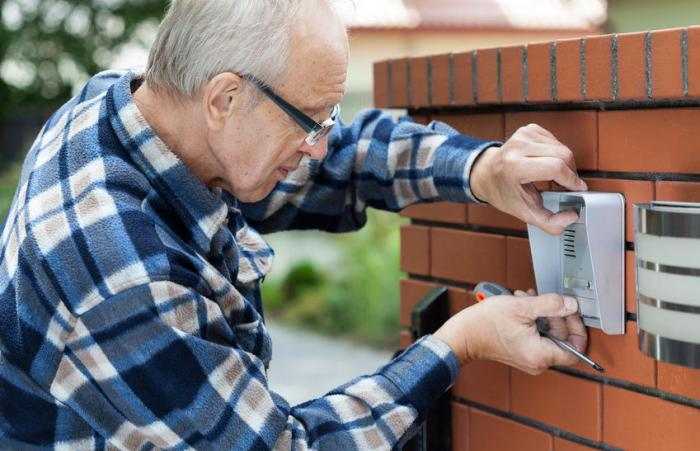
You can put a doorbell in an apartment in a couple of hours. Even if it's a wired option. The bell is usually set backing 10-15 cm from the doorjamb. The installation height was previously at the level of 140-160 cm, today they are increasingly setting it at the level of 120-140 cm - it is more convenient for children and elderly people to use it.
The indoor unit is located near the entrance, but is hung higher - so as not to interfere. The wires connecting the two blocks are most often drawn through the hole in the door frame. At the same time, they are trying to hide them - to lay them in a strobe.
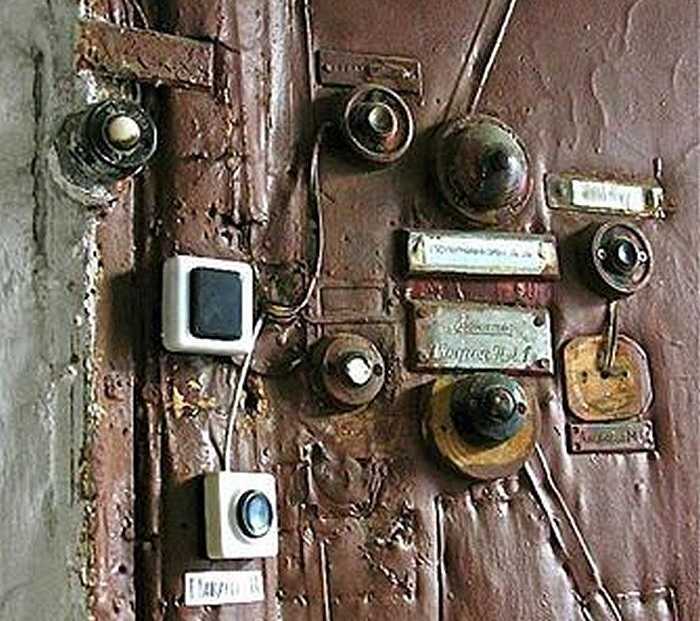
You can even put a wire bell on the door .... and not one
There is a second option - to drill through the wall, pass wires through the hole, and coat on both sides. In this case, you can position the button opposite the indoor unit. Damage to the wall in this case will be minimal. If this option does not work, the hole can be made either opposite the place of installation of the bell, or opposite the place of installation of the indoor unit, thus minimizing damage on one side or the other.
So that in the future, if you need to replace the bell or wiring, not to start it all over again, you can insert a plastic or metal tube of small diameter into the hole in the wall - so that it is enough to lay two thin cables. After the wires are laid in it and everything is connected, you can drown the edges with a rag, gloss over with plaster mortar.
With wireless models, everything is easier - you can fix the button anywhere in the radius of the receiver (see description), install and connect the indoor unit. That's all.
In a private house, the button and the indoor unit are usually at a considerable distance. The button is placed near the entrance gate, and the indoor unit is in the house. When installing a wired call, the distance between them does not affect the performance, it only affects the length of the required cable. But choosing wireless models, you need to select them so that the button is in the zone of reliable reception.
When you connect a wire bell, the wires are pulled either through the air, fixing them on the available supports - trees, poles, walls of buildings. This installation method is faster and less labor-intensive, but also less reliable - it is easy to damage or steal the cable. The second way is. For models powered by 220 V, all installation requirements are preserved - the depth of the trench is 70-80 cm, on top - a protective tape, etc. To supply 24 or 12 free power, you can lay the cable in the corrugation to a depth of about 35-45 cm. But at this depth it can be damaged by a shovel during work on the site.
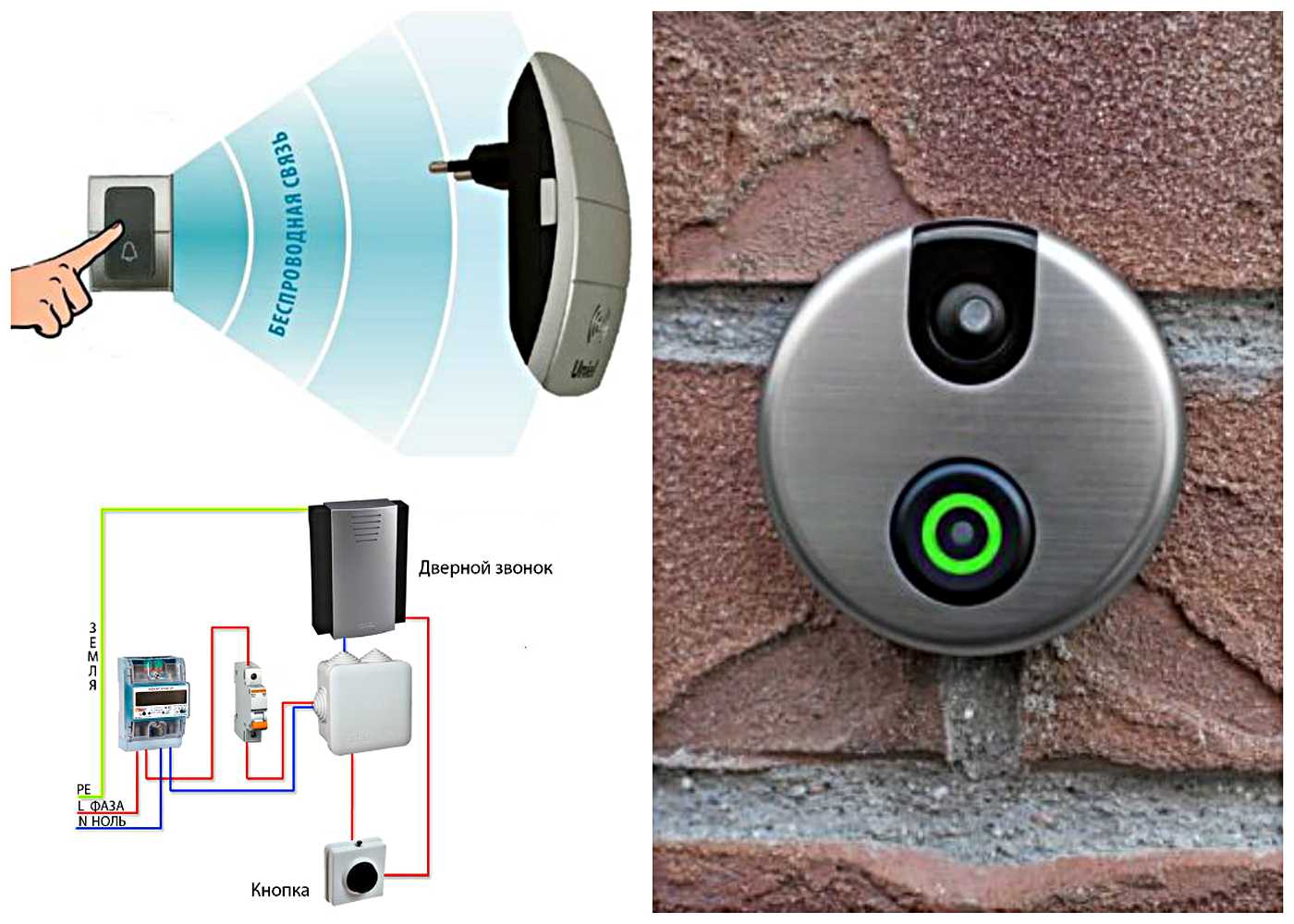
With wireless models, installation and connection are simpler. Fixed in range, installed batteries. All. But, when choosing the installation location of the bell button, sometimes you have to be smart. Most of the problems arise if the fence is solid, metal - from a profiled sheet, for example. A sheet of metal shields the signal from / to the receiver and the wireless call simply does not work. In this case, there is a simple option - to make a hole in the fence and install the button so that the case with the transmitter is behind the fence, and the button itself is accessible. The option is simple and straightforward, but not everyone likes it.
The second method requires intervention in the design. Set the standard button with the transmitter on the inside of the fence, after soldering the wires to the input and output. On the outside of the fence, put the usual button (it is better - in the weatherproof version - with a rubberized case). Connect it in series. When you press the second one - with the transmitter - power is supplied, it sends a signal.
This chapter will focus on electrical connection. We will consider separately wired and wireless models, since power and methods for its supply / delivery are different.

The vast majority of wire-type doorbells are powered by 220 V and only about 10-15% from 12 or 24 V. When installed on the street, in the courtyard of a private house, the second option is safer, since low voltage does not pose a danger to humans. But in this case, it is necessary to have an inverter that converts 220 V to a safer low-voltage power supply of 24 or 12 V.
When connecting a call to a 220 V network, power can be taken from the nearest junction box. The doorbell indoor unit is usually installed next to the door. Here usually there is a junction box, from which the power goes to the lighting. This is where you can connect the call.
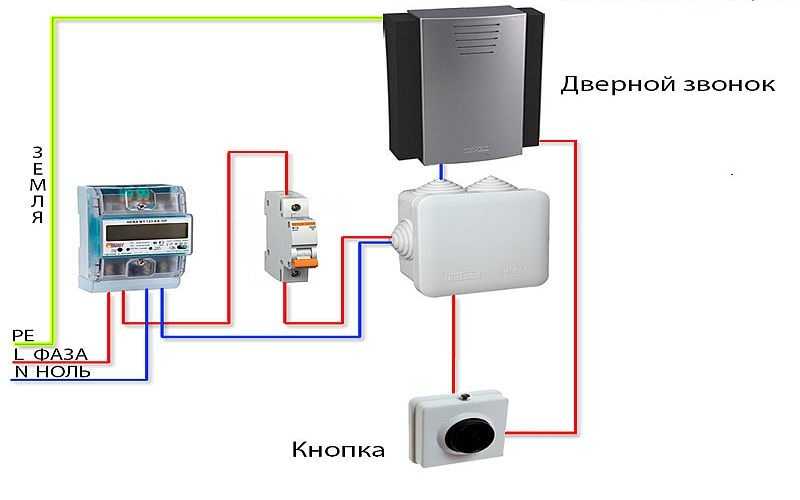
The doorbell connection diagram is simple: the phase starts up on the button, it goes from it to one of the outputs of the indoor unit. A neutral wire is supplied to the second contact of the block. The diagram of this connection is shown in the figure below.
In addition, how to connect a call, you need to think about how you can connect it. The currents in these devices are very small, and when connected in an apartment (the route between the bell and the indoor unit), literally any wire in isolation is suitable. It can even be telephone noodles, Internet cable, twisted pair.
![]()
You can connect the bell in the apartment "noodles" with a solid core diameter
If you need to pull power on the street, you need already a power cable - or NYM of the smallest cross-section. You can also use wires in a rubber or PVC sheath, but it is better to lay them in a protective corrugated hose.
Sometimes you need to connect two buttons to one call - for example, from the gate and already from the front door. In this case, they are connected in parallel.
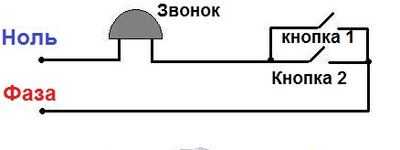
Two wires connected to the phase come out of the distribution box. One pull on one button, the second on the other. From the second contact of each of them comes a wire. Both of these conductors are wound on one of the contacts of the indoor unit. A wire from the “neutral” from the junction box is connected to the second free contact. With this connection scheme, the call will work when you press any of the buttons.
In the wired version, you can put not only two buttons, but also two rings. You can even three if necessary. This situation is more common. For example, to put one call in the house, the second - in the building, in which no less time is spent than in the house. In the summer kitchen, in the garage, etc.

How to connect a call in this case? Two calls are connected to the power supply in parallel. To do this, the phase is fed from the junction box to the button. Two conductors leave the second output of the button: one for each ring. We give a “neutral” to the free conclusions of calls - again, two wires.
Wireless models are most often powered by batteries, but there are models whose internal units are powered by 220 V. But in the second version, all you need is to simply plug them into a power outlet - there is a standard plug on the back. So the question of how to connect the call in this case does not arise.
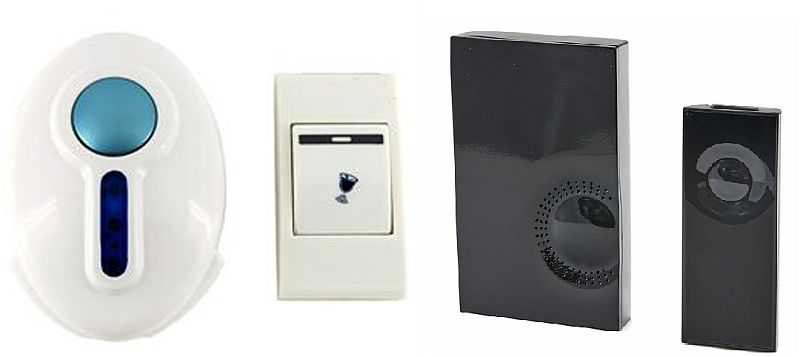
Wireless models - different types, different styles
In regions with cold winters with buttons that operate on batteries, you need to be careful: not all of them can work at -20 ° C, not to mention lower temperatures. Lithium batteries feel good in cold weather. But they are not in all formats, but only in AA and AAA. So it’s best to find a call where the button is powered by this type of power source. If you already have a call and the batteries there regularly "drain", you can try to find another way:
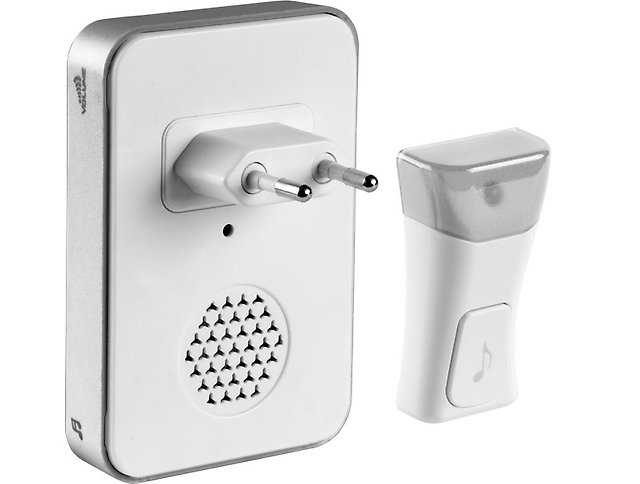
Perhaps there are other ways to connect the call wirelessly so that it works in cold weather.
On each entrance door of a residential, office or industrial premises, a doorbell is required. This device is indispensable, as it allows you to promptly report with a sound signal about the arrival of guests.
Currently, there are several call designs that differ not only in functionality, but also in various connection options.
Therefore, it is necessary to correctly determine the availability of technical conditions for their installation and independently perform this procedure. This will not only save financial resources, but also gain installation experience.They are a fairly simple design, which, when exposed to external forces, creates various sound signals. These include small bells suspended indoors and set in motion by an external rope or simple rings fixed to a door. Currently, they are outdated and used for decorative purposes. Their advantage is independence from any power sources, as well as simplicity of design. That is, connecting a doorbell will not require complex installation work and the application of special knowledge in the field of construction and electrical engineering.

Doorbell kit
This type of call is an advanced mechanical model. It consists of two blocks: a remote button and a housing with a resonator located inside. They are interconnected by wires, and the main unit is connected to electric network. Inside the main unit there is an electromagnetic coil, which, when voltage is applied, transfers force to the attached metal plate and, thus, generates an audio signal.
Note!
Such models are practically not used, since their mechanical parts are very unreliable, and the sound tonality does not change.
This type of call is a modern solutions based on microchips. They are available in two types of execution: wired and wireless. Both options have compact sizes, several built-in melodies, as well as additional functions, including motion sensors, an autonomous power supply system, etc. The main difference between them is that the wireless doorbell circuit is greatly simplified and you just need to place the button to install it -the transmitter and receiver of the signal within the permissible zone of reliable signal transmission.
Installing a wired connection of the bell button to the main unit will require laying a hidden cable in the wall, and, accordingly, cause a violation of the external wall decoration. It will also require experience installing cables and restoring the exterior wall decoration. If the call is installed in a private house, then pulling the cable along the street, and then entering the room is quite difficult. But after the installation is completed, a reliable warning system will be obtained, which can work from the main mode in the main mode and from batteries in emergency mode, and can also be easily replaced with another without removing the cable.

Wireless call device
Cable management is only needed for wired calls. For this, the surface of the walls inside the building is examined near the exit from the house or apartment for the presence of the nearest junction box. Usually it is located in the upper part of the wall at the place of cable entry into the house from the meter. Indoors, the cable can be laid externally or in a hidden way, and outside the apartment only hidden, to provide reliable anti-vandal protection. For concealed wiring, a groove in the wall of a suitable size will be drilled with a puncher. External wiring is stacked in boxes mounted on self-tapping screws.
To connect the doorbell with your own hands, make a sketch taking into account all the technical features of the room for the optimal location of the button and the main unit. Then they will ditch the groove along the wall in a horizontal direction with a depth three times the diameter of the cable being laid. All turns of the cable are performed at a right angle so that subsequently there are no problems with their search. The wires are fixed with plastic staples every meter. In the junction box and the junction points of the connection, a margin of about 10-15 cm is left.
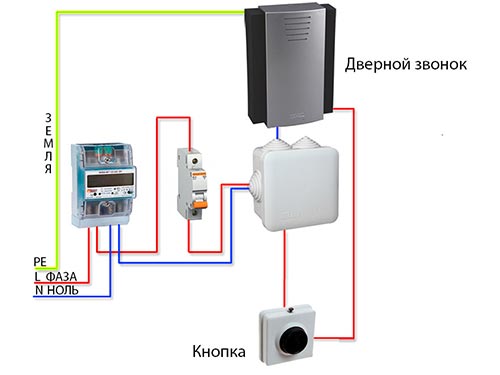
The main unit is attached to the wall on the dowels, after which it is connected to the laid cable into the gap of the neutral wire. If connected to a phase cable, then when you click on the bell button, you can disable the electronics. A wire of blue or black color is zero, and red is a phase wire.
Note!
You can precisely determine the phase using a special indicator.
Connections must be made to the terminal blocks to prevent short circuits. The unit is disassembled in accordance with the instructions and connect the cable to the terminals. The battery doorbell is simple enough to fix on the wall without laying and connecting wires.
It is advisable to install the bell button at least 1.5 m from the floor for ease of use. First, the button is disassembled, fixed on the screws or dowels to the wall or door, and then the wires are connected. The housing cover is carefully put on over the fixed internal part and is screwed or latched. It is enough to fix the wireless button to the wall on a double adhesive tape or in any other way.
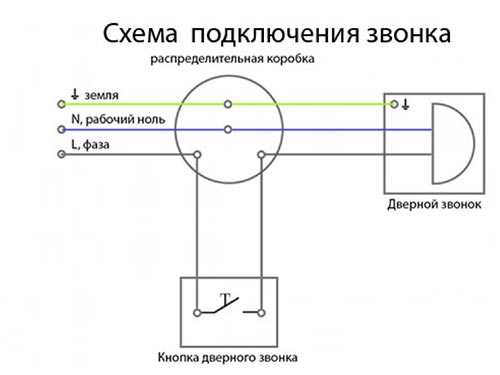
After completing installation work, you must connect to the power supply. First, on the introductory board, the power supply to the apartment is turned off using circuit breakers. Then connect the neutral wire and phase to the corresponding supply wires in the junction box. A connection error can cause a breakdown of the main unit, so you need to use the phase indicator before connecting the doorbell. If everything is done correctly, then after turning on the power, the circuit should work. If the call does not work, then the tester needs to ring the wiring and fix the breakdown.
It is quite simple to connect a doorbell on your own with the right phased approach. It is enough to study the technical conditions for wiring, select the appropriate design and type of call, and also fulfill all the requirements of the installation instructions.
We talked about all the basic schemes for connecting apartment calls in the article "".
For our installation example, we chose a wired electromechanical doorbell Zamel (Notice) model Bim Bam - two-channel gong. This electric bell is intended for installation in a standard wiring diagram, so the scope of delivery is as simple as possible.

Proceed to install the doorbell
Be careful! The scope of supply does not include a power cord with an electrical plug for connecting to a socket for ringing. In our installation example, we will show how to turn the absence of an electric cord into an advantage, resulting in an aesthetically more successfully installed doorbell.
For the call to work correctly, according to the connection diagram, a control button displayed in the entrance is required.
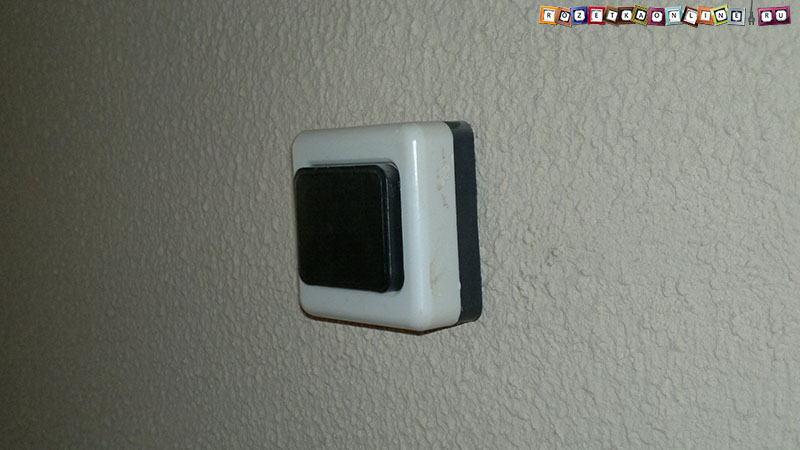
And a socket for connecting the call itself, which is often located inside the apartment next to the front door, under the ceiling.
In our case, since the Zamel electric bell does not have an electric cord for plugging into a socket, we removed the socket mechanism in advance and brought out the supply cable necessary for connecting the wires. In our case, this brown (Phase wire coming from the button) and blue (zero). From the ends of the cable cores, insulation was removed at a distance of about 10mm - 12mm.
How to determine which of the wires is phase, zero, and which grounding is your own, our will help you detailed instructions - .

If the wiring is done correctly, exactly according to the diagram, the voltage on the wires should not be until the button is pressed. But it is best to forcibly turn off the supply of electric current to the metering and distribution board.
To do this, in the electrical panel, it is necessary to translate the levers of the circuit breakers in the “off” state, usually this is the position in which the lever is pointing down. Which automatic machine must be turned off, if they are not signed, is determined empirically, turning them off in turn, and checking, for example, with an indicator screwdriver, the presence of voltage to the wiring for the switch. In extreme cases, turn off everything. But then again, be sure to check that there is no electric current at the installation site!
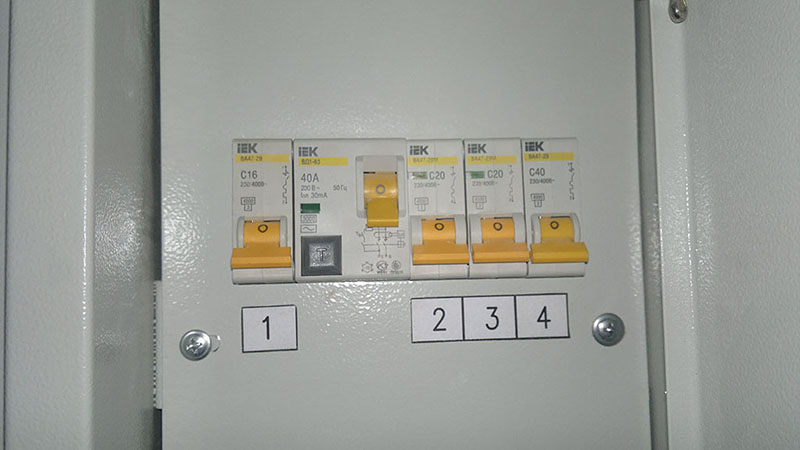
We lay the wires of the supply wire into the bell housing, from the back, through a special hole, as shown in the image below.
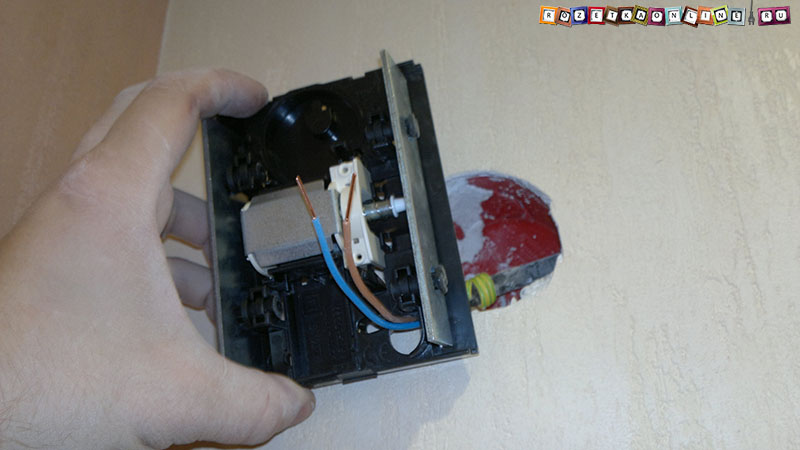
We connect the wires, placing them in the terminals located directly in the doorbell mechanism. In the Zamel electric bell, self-locking spring terminals are used for connection, which greatly speeds up and facilitates installation.

Slightly above the socket, from which the wires for connecting the call are derived, we screw in a self-tapping screw. At the same time, its head should not enter the wall to the end, but should protrude to a distance of 3mm - 5mm, as shown in the image below. Depending on the wall materials, various fasteners can be used, the main condition is that the head matches the size of the seat in the bell fasteners.
Be sure to check for wiring at the mounting location, if you’re not sure, it’s safer to step back from the installation axis of the socket to either side.
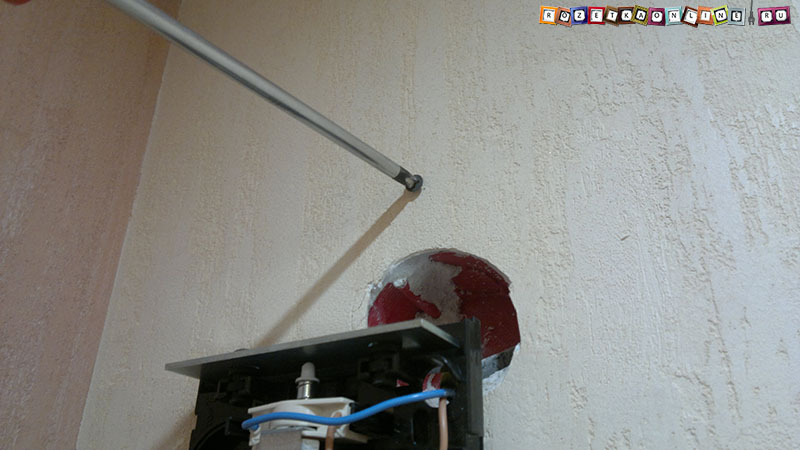
We dress the bell housing on the head of the self-tapping screw using a special seat on its back. By adjusting the distance that the fasteners stick out of the wall, you can achieve the most reliable fixation of the call on the wall.

After the housing bell housing is securely fixed, put the cover back in place, as shown in the image below.
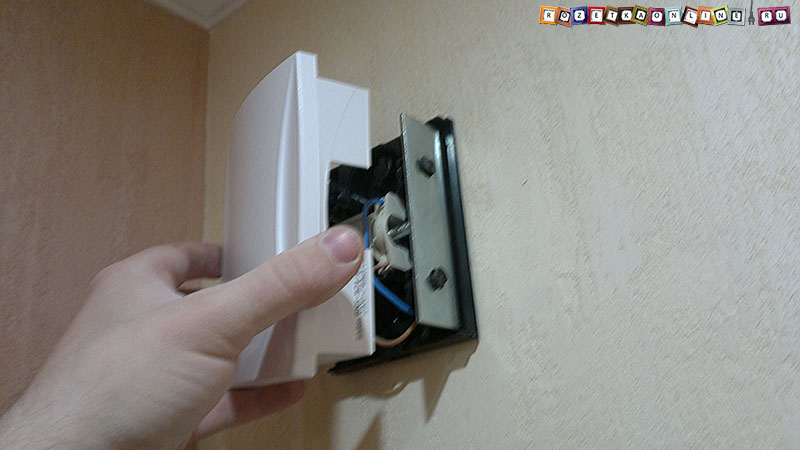
This completes the installation of the wired electric bell, you can turn on the power supply and check its operation. If everything is correct, when you press the control key (bell button) located in the stairwell, you will hear a pleasant, melodious sound that subsides if you release the button.

As you can see, the bell completely blocked, behind it, the socket and due to the lack of extra wires it looks very attractive in the interior.
This installation method, in our opinion, is the most convenient and aesthetically attractive. The main disadvantage is the lack of a simple possibility of forcibly turning off the doorbell. Calls are rarely equipped with switches, but you can’t simply turn it off from the outlet. Another question is how often do you need such an opportunity. In any case, you can always quite simply implement a switch of any type in a call, for example, a rope switch.
Now you know how to install a doorbell and can easily do it yourself.
If you have questions about installing a doorbell of any type, leave it in the comments to the article, try to help.
Also, if you have discovered inaccuracies or have any additions to the article, be sure to write!
Good day, dear readers of our blog. Let's look at the topic of how to connect a doorbell with your own hands, without resorting to the help of a familiar electrician who, most likely, will culturally refuse, unless it is a global wiring of your apartment during the next major repair.
If you are lucky with the repair, then you will replace the old wiring with a new one, which will affect the call. If the repair is not foreseen and the circuit does not work, and the wire is broken somewhere, then you can find the broken area and restore, so that the circuit works.If you do not want to suffer, then you can use the wireless connection scheme.
In this embodiment, everything is very simple, there is no need to break through the gates, lay wires, and even think about how to make wire switching in the junction box. There are several options for wireless calls. Let's take a closer look at two options.
The first option kit includes a button (possibly two), which works on a battery and a call unit on the case, which has a plug for an ordinary outlet on the back side, and the front side carries some kind of design solution and there are also buttons for controlling the melody and sound volume on it , control can be located on the side.
Connecting is never easier. The call block with a plug is inserted into any outlet convenient for you, and the button is installed in front of the front door. The button can be installed on double-sided tape, or on screws, if provided by design. In the second version, the button is also fastened in front of the front door with tape or screws, but the call unit no longer has a plug and operates on two or three finger batteries.
In this case, the bell is installed in the apartment, usually above the front door. A hole is drilled, a plastic dowel is inserted, into which a screw is screwed on which the bell is hung. Fasteners, of course, may be different depending on the design. It's just that you can solve this problem without noise and dust.
In this case, of course, you have to tinker. As a rule, in the corridor near the entrance door, a switch is installed for the corridor lamp. From the switch, the wire rises into the junction box, in which the power wires and the lamp are connected, here in this box, the supply wires and the wires going to the button and the bell also commute.
If you are in the process of repair, then you can safely make a furrow from the junction box to the future location of the bell and lay the wire, just in case, a three-core and small section (0.5-0.75mm 2), the third core will be just in case, for grounding metal parts of the call, because you don’t know what you’ll get, this is usually thought of later.
The second wire is already two-wire, also of a small cross section, laid from the switch box to the button, also in the strobe, then it is brought out through the through hole into the vestibule and then in the strobe or plastic box to the door frame from the side where the button will be and to the desired height (usually 1.5 meters from the floor).
At the desired height in the frame we drill a hole of a larger diameter than the wires, it is desirable that the wires are double insulation or insert a sleeve into the hole, and let the wires out through it, no matter what the wire touches directly to the tree. Next, we disassemble the button and, according to the instructions, fix it to the frame, from the side of the staircase of course and connect the wires to the contacts of the button.

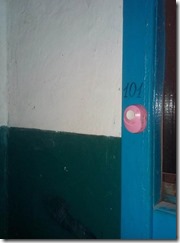
Keep in mind that a phase is applied to the button, which in standby mode is broken by a contact. And before you start producing in a junction box, you should make sure that there is no voltage.
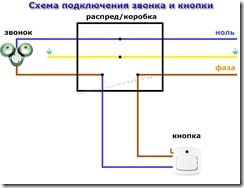
Next, we return to the distribution box and do the switching of wires. The supply wires in our case are three colored, blue is zero, brown is phase and yellow is zero. From the button to the box, a two-wire cable is laid, the colors of the wires are blue and brown, and three wires are laid to the bell, blue, brown and yellow.
We clean all the wires in the box, take the incoming blue neutral wire and connect it to the blue wire that goes to the bell. Next, connect the yellow grounding wires. Now we take the incoming brown phase supply wire and connect it to the brown wire going to the button, then we take the blue wire coming from the button and connect it to the brown wire going to the call.
In our case, the connection of the wires was made by twisting and soldering, see how to make wire connections with different options in a separate article. After gluing the wallpaper, the ringer unit is installed, for this, the holes for the rim fastener are drilled according to its design, the blue and brown wires are connected, if necessary, the yellow ground wire.
Then voltage is applied, we press the button and if everything is done correctly, they should hear the sound of a melody or trill, or something else. If for some reason the repair is not expected and there is no call, but it is needed, then we take a screwdriver and opposite the corridor lamp switch near the front door, retreating from the ceiling down 15-20 centimeters, tap the wall with the back.
The heard muffled sound will show, the cover of which must be carefully removed and all operations related to laying, connecting wires and connecting described above should be done. This of course will lead to a violation of the integrity of the wallpaper from gating, plus dust and, as a result, a little repair.
Sincerely, Alexander & Igor!
To notify the residents of the apartment of the arrival of the guests, a doorbell was specially created. Today it is represented by two types: wired and wireless devices. In order to be able to receive an audio signal with its help, it is necessary to connect the device. How to do it right?
Attention! All work, except for the determination of the phase and zero cable, is performed with the power off.
First, how to connect an electric bell in an apartment with wires. Open the box with the device and examine it. How many lived out? Now compare their number with what looks out of the wall in the place where you decided to put the bell box. Several options are possible.
The work plan is to search for phase and zero. To do this, use an indicator screwdriver. Touch the end of the exposed wire. If the light does not light up, it is zero. It is directly connected to the common wire in the junction box. It is advisable to use a terminal block for connection, rather than twisting.
The phase upon contact with the screwdriver is detected by the indicator light. The vein is led through a button that plays the role of a key that closes the electric circuit. And then the wire is connected to the phase in the junction box.
If a three-core cable comes out of the device and the hole in the wall, then you have provided grounding. This can only be in new buildings, where the wiring has a standard color:

Using the color, easily identify the wires, but for better safety, nevertheless, make sure that the wiring is correctly constructed with an indicator screw driver. How to connect a doorbell 2 wires, you already know. With three wires all the same, except that in addition you need to combine the ends of the grounding wires.
If the wall and bell have a different number of wires, the one that is “redundant” is a grounding conductor. It is only needed to increase security, but does not affect the operation of the device. The connection diagram of the doorbell 220V with two wires is known to you. It remains only to qualitatively insulate the tip of the grounding cable.
Have you decided to connect the doorbell for the front door so that you can receive a signal from two different places? Then you need a second button, but you can use three, four or more. The main thing is to be guided by the rule: all of them must be connected in parallel.
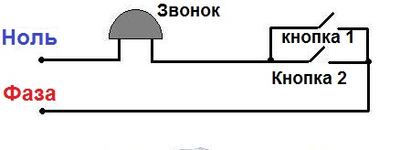 The two-button doorbell, the connection diagram of which is given above, is convenient for use in cottages with several entrances to the house.
The two-button doorbell, the connection diagram of which is given above, is convenient for use in cottages with several entrances to the house.
Wireless counterparts can be powered by a wall outlet or batteries. The first one is inconvenient in that it does not work when the power supply is disconnected, the second one because it requires regular battery replacement. Their advantage: they do not require a connection.
